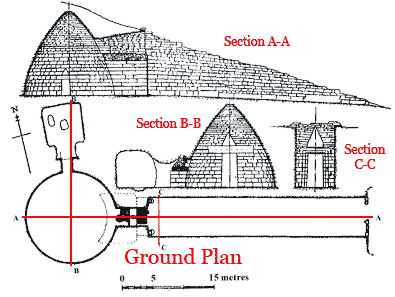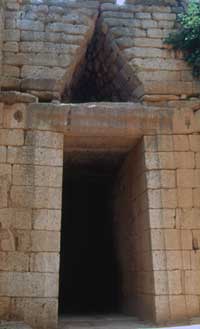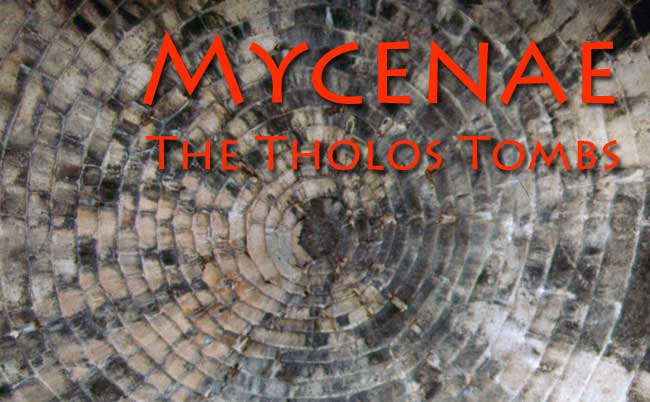
Tholos Tombs at Mycenae
The latest kings and queens at Mycenae were buried in what are known as tholos tombs. They were similar in design to chamber tombs with one important difference. Instead of being hollowed 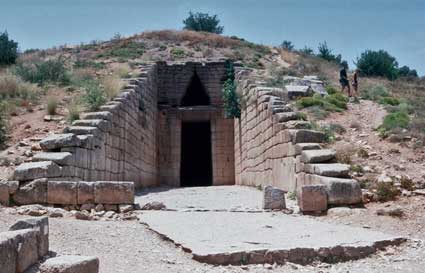 out of the hillside, tholoi were built out of stone blocks and then covered with earth. Usually the side of a hill would be cut away to provide space for the construction of a dome-shaped burial chamber (tholos) and a sloping passage (dromos) leading to a deep doorway (stomion). The tholos was built out of ashlar blocks using a technique known as corbelling to create the dome (see page title illustration). This involved laying the stones so that each horizontal course slightly overlapped the one below it until the distance was small enough so that a single slab could be used to close the gap. The dirt from the excavation was replaced until the tholos was at least partly covered. In later examples, the dromos lined with ashlar blocks as well. With each burial, the stomion would have been walled shut and the dromos filled with earth.
out of the hillside, tholoi were built out of stone blocks and then covered with earth. Usually the side of a hill would be cut away to provide space for the construction of a dome-shaped burial chamber (tholos) and a sloping passage (dromos) leading to a deep doorway (stomion). The tholos was built out of ashlar blocks using a technique known as corbelling to create the dome (see page title illustration). This involved laying the stones so that each horizontal course slightly overlapped the one below it until the distance was small enough so that a single slab could be used to close the gap. The dirt from the excavation was replaced until the tholos was at least partly covered. In later examples, the dromos lined with ashlar blocks as well. With each burial, the stomion would have been walled shut and the dromos filled with earth.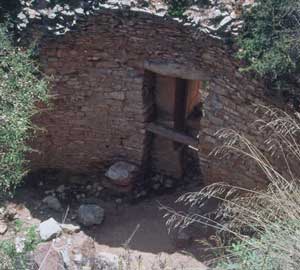
The earliest examples, such as the Tomb of Agisthos (right), were built of rubble and lack a relieving triangle above the lintel. Unfortunately, the majority of tombs had been robbed and so the dating scheme is based on very slender evidence.
The Treasury of Atreus at Mycenae is the largest and best-preserved of the surviving tholoi. The long dromos is lined with ashlar blocks, reaching a height of 10 metres where it meets the facade. The facade is well-preserved (although its decoration has been removed). It was flanked by half-engaged columns (their bases survive) and has a relieving triangle above the door. Fragments of the relief decorations survive. The stomion is 5.5 metres high and 5.25 metres deep and was fitted with double doors in the middle (indicated by the paved threshold and nails in the side walls to secure the door frame). The tholos rose some 33 courses of masonry (13.7 metres high). Holes with bronze nails may have held rosettes and other decorative elements, fixed to the walls. A doorway in the north side of the chamber led to a small side chamber which was a feature of some of the later tombs. A mound of earth surrounded by a low retaining wall covered the dome (probably in the middle of the 13th century BC).
 Treasury of Atreus. Stomion & interior Treasury of Atreus. Stomion & interior |
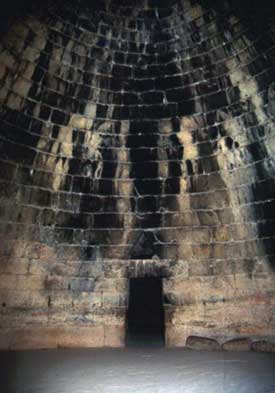 Treausury of Atreus. Entrance to the Side Chamber Treausury of Atreus. Entrance to the Side Chamber |
The Tomb of Clytemnestra, near the foot of the ramp leading to the Lion’s Gate is somewhat later in date (perhaps ca. 1220 BC). Its dromos was somewhat damaged by the construction of a theatre in Hellenistic times. Although it had been robbed long ago some artefacts, including gems were recovered in the fill. It is most likely the tomb that the Greek travel writer Pausanias identified as belonging to Agamemnon.

